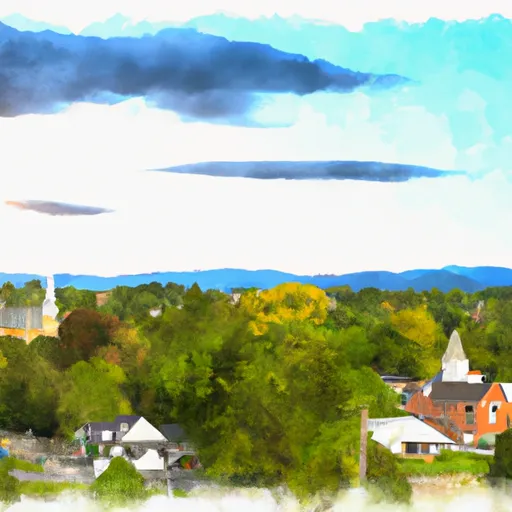-
 Snoflo Premium
Snoflo Premium
Get unlimited access to all our content
With no Ad interruptions! - Start Your Free Trial Login with existing account
Morrisville
Eden Index
Climate
7.4
•
Recreation
4.4
•
Community
2.7
•
Safeguard
5.2/10

Morrisville, Vermont is a charming town located in Lamoille County, nestled in the beautiful Green Mountains. The climate in Morrisville can be described as a typical New England weather, with cold, snowy winters and warm, pleasant summers. The average high temperature in the summer reaches around 80°F (27°C), while in the winter, temperatures can drop below freezing, with an average high of 30°F (-1°C).
Hydrologically, Morrisville benefits from numerous streams and rivers that flow through the area. The Lamoille River, in particular, is a prominent feature, offering opportunities for fishing, kayaking, and canoeing. The river is home to various species of fish, including trout and bass, making it a popular destination for anglers.
For outdoor enthusiasts, Morrisville boasts a wide array of recreational opportunities. The nearby Green Mountains provide ample opportunities for hiking, mountain biking, and camping. In the winter, the region transforms into a winter wonderland, with opportunities for skiing, snowboarding, and snowshoeing in the nearby Stowe Mountain Resort or at other local ski areas.
Overall, Morrisville, Vermont offers a picturesque setting with a diverse range of outdoor activities, making it a haven for nature lovers and adventure seekers alike.
What is the Eden Index?
The Snoflo Eden Index serves as a comprehensive rating system for regions, evaluating their desirability through a holistic assessment of climate health, outdoor recreation opportunities, and natural disaster risk, acknowledging the profound impact of these factors on livability and well-being.
Climate Health Indicator (CHI): 7.4
Morrisville receives approximately
1050mm of rain per year,
with humidity levels near 79%
and air temperatures averaging around
6°C.
Morrisville has a plant hardyness factor of
4, meaning
plants and agriculture in this region thrive during a short period during spring and early summer. Most
plants will die off during the colder winter months.
By considering the ideal temperature range, reliable water supplies, clean air, and stable seasonal rain or snowpacks, the Climate Health Indicator (CHI) underscores the significance of a healthy climate as the foundation for quality living.
A healthy climate is paramount for ensuring a high quality of life and livability in a region, fostering both physical well-being and environmental harmony. This can be characterized by ideal temperatures, reliable access to water supplies, clean air, and consistent seasonal rain or snowpacks.
Weather Forecast
Streamflow Conditions
Richelieu
Area Rivers
Richelieu
Snowpack Depths
Richelieu
Reservoir Storage Capacity
Richelieu
Groundwater Levels
Recreational Opportunity Index (ROI): 4.4
The Recreational Opportunity Index (ROI) recognizes the value of outdoor recreational options, such as parks, hiking trails, camping sites, and fishing spots, while acknowledging that climate plays a pivotal role in ensuring the comfort and consistency of these experiences.
Access to outdoor recreational opportunities, encompassing activities such as parks, hiking, camping, and fishing, is crucial for overall well-being, and the climate plays a pivotal role in enabling and enhancing these experiences, ensuring that individuals can engage in nature-based activities comfortably and consistently.
Camping Areas
| Campground | Campsites | Reservations | Toilets | Showers | Elevation |
|---|---|---|---|---|---|
| Elmore State Park | None | 1,637 ft | |||
| Eden Rec Area | None | 1,251 ft | |||
| Allis State Park | 26 | 1,875 ft | |||
| Smugglers Notch State Park | 34 | 1,934 ft | |||
| Little River State Park | 100 | 731 ft |
Nearby Ski Areas
Catastrophe Safeguard Index (CSI):
The Catastrophe Safeguard Index (CSI) recognizes that natural disaster risk, encompassing floods, fires, hurricanes, and tornadoes, can drastically affect safety and the overall appeal of an area.
The level of natural disaster risk in a region significantly affects safety and the overall livability, with climate change amplifying these risks by potentially increasing the frequency and intensity of events like floods, fires, hurricanes, and tornadoes, thereby posing substantial challenges to community resilience and well-being.
Community Resilience Indicator (CRI): 2.7
The Community Resilience Indicator (CRI) recognizes that education, healthcare, and socioeconomics are crucial to the well-being of a region. The CRI acknowledges the profound impact of these elements on residents' overall quality of life. By evaluating educational resources, healthcare accessibility, and economic inclusivity, the index captures the essential aspects that contribute to a thriving community, fostering resident satisfaction, equity, and social cohesion.

